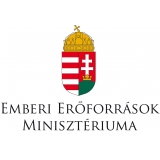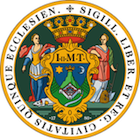Main Sponsors
-
 Reiso Pécs
Reiso Pécs -
 Hotel Lycium****
Hotel Lycium**** -
 Pécs ZOO
Pécs ZOO -
 http://www.mecsekegyesulet.hu/
http://www.mecsekegyesulet.hu/ -
Doro Ékszer
-
 Hetényi Pincészet
Hetényi Pincészet -
 Zsályaliget Élménypark
Zsályaliget Élménypark -
 Fabrik Barkács Szaküzlet
Fabrik Barkács Szaküzlet -
 Katica tanya
Katica tanya -
 E.ON Hungary
E.ON Hungary -
 http://www.ipark-pecs.hu/
http://www.ipark-pecs.hu/ -
 https://www.otpbank.hu/otpklub/Fooldal
https://www.otpbank.hu/otpklub/Fooldal -
 http://www.pecsibalett.hu/hindex.html
http://www.pecsibalett.hu/hindex.html -
 www.lakics.hu
www.lakics.hu -
 Gépszer
Gépszer -
 http://www.kormany.hu/hu/emberi-eroforrasok-miniszteriuma
http://www.kormany.hu/hu/emberi-eroforrasok-miniszteriuma -
 http://www.pnsz.hu/
http://www.pnsz.hu/ -
 http://www.pecs.hu/
http://www.pecs.hu/ -
 Mischl Autóház
Mischl Autóház -
 Öko-Trade Ltd
Öko-Trade Ltd -
 Bóly and Vicinity Savings Bank
Bóly and Vicinity Savings Bank -
 Mecsekerdő Forestry Ltd
Mecsekerdő Forestry Ltd -
 http://www.deltakarek.hu/
http://www.deltakarek.hu/ -
 University of Pécs
University of Pécs -
 http://kloe.hu/
http://kloe.hu/ -
 http://www.lafarge.hu/
http://www.lafarge.hu/ -
 http://www.gondoldo.hu/
http://www.gondoldo.hu/


Pannon Philharmonic Orchestra
3 Mar 2011. 19:30 | Kodály Centre
Breitner Season ticket 2010/2011 | Gyermán Season ticket 2010/2011 |
Orchestra
Pannon Philharmonic OrchestraConductor

Tibor Bogányi
In 2017/2018, he is spending his seventh season as chief conductor of the Pannon Philharmonic.
Tibor Bogányi is of Hungarian descent and is regarded as the most interesting and talented member of the generation of Finnish conductors. At the age of 28 he was appointed Chief Conductor of… More
Soloist

Ildikó Komlósi
mezzosopran
Hungarian mezzo-soprano Ildiko Komlosi studied music at the Franz Liszt Academy of Budapest and took part in the specialising courses of the Teatro alla Scala and Guildhall School of Music in London. She was the absolute winner of the Pavarotti… More
About the Programme
Program:
Webern: Passacaglia, op.1
Mahler: Kindertotenlieder
Dohnányi: Symphony No.2 in E major, op.40
Anton Webern is considered by the Western-European avant-garde movements as the leader to follow, and at the same time, one can find in his music the organised-being of the Renaissance or earlier styles. He composed his Passacaglia Op.1 under the tutorage of Arnold Schönberg. The passacaglia is a typical variation series of the Baroque; it was created by Webern with instead of a real theme with using of tiny fragments, or mottos. He achieved a strange colour mix by giving almost each sound of the phrases to another instruments; the basic mood of the piece is from this late-romantic feature.
At the publishing of the Kindertotenlieder (Songs on the Death of Children), in 1905, their composer, Gustav Mahler (1860-1911), as a writer of songs and symphonies, was renowned throughout Europe. These songs, arranged to the elegies by Friedrich Rückert grieving over the loss of his children, with their gloomy themes could be born effected by Mahler’s childhood memories. In the first song, the loneliness is expressed; in the second one, the lately recognised signs of the child’s death are cited. The third verse shows the girl really present; the fourth is a self-consolation. The last song is the height of the tragedy, closed with a slow cradle song, as kind of reconciliation.
The first opuses of Ernő Dohnányi (1877- 1960) are mainly piano and chamber music pieces. Among them are works that were played by Brahms himself in Vienna, commented with appraising worlds. The master of classicising endeavours, fed by the post-romanticism, Dohnányi, who left Hungary in 1944 for political reasons, settled in 1949 in the United States. Affected by this, he experimented with novelties in his music but in his works with a bigger staff, he was cautious. That is true for the Symphony No.2 (Op. 40), of which writing began in 1943 and of which “American” version (1956) is its final form: a traditional four-movement symphony, with a variation series and a fugue in its last movement.











































